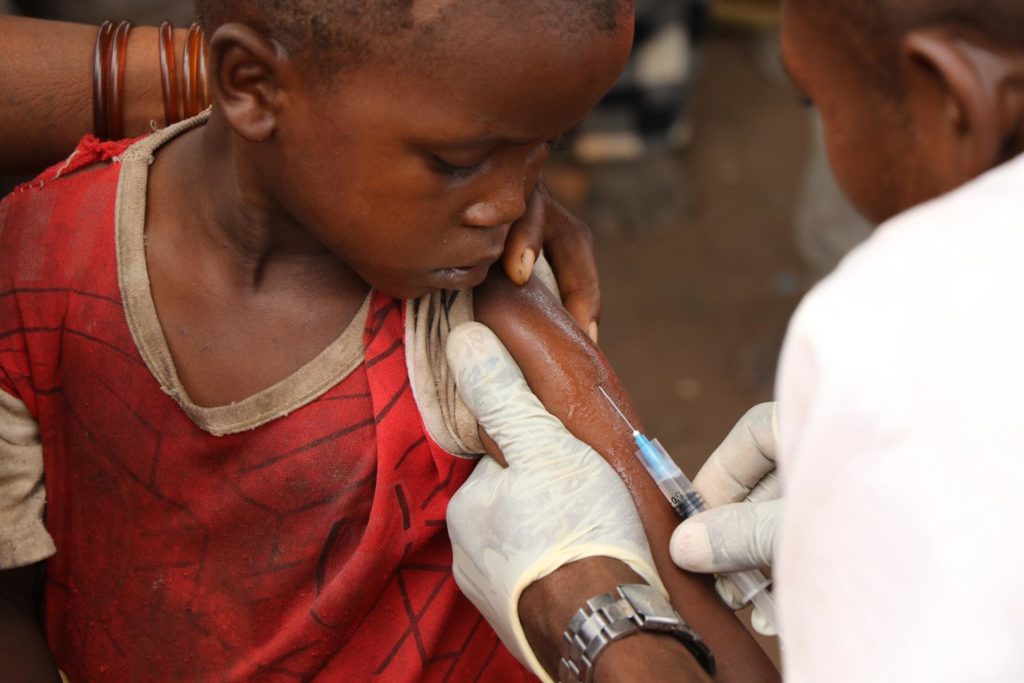As COVID-19 devastates fragile health systems, over 6,000 children under five could die a day, warns UNICEF
UNICEF launches #Reimagine, a global campaign to prevent the pandemic from becoming a lasting crisis for children

NEW YORK, 13 MAY 2020 – An additional 6,000 children could die every day from preventable causes over the next six months as the COVID-19 pandemic continues to weaken health systems and disrupt routine services, UNICEF said today.
The estimate is based on an analysis by researchers from the Johns Hopkins Bloomberg School of Public Health, newly published in The Lancet Global Health journal. Based on the worst of three scenarios in 118 low- and middle-income countries, the analysis estimates that an additional 1.2 million under-five deaths could occur in just six months, due to reductions in routine health service coverage levels and an increase in child wasting.
These potential child deaths will be in addition to the 2.5 million children who already die before their 5th birthday every six months in the 118 countries included in the study, threatening to reverse nearly a decade of progress on ending preventable under-five mortality.
Some 56,700 more maternal deaths could also occur in just six months, in addition to the 144,000 deaths that already take place in the same countries over a six-month period.
“Under a worst-case scenario, the global number of children dying before their fifth birthdays could increase for the first time in decades,” said UNICEF Executive Director Henrietta Fore. “We must not let mothers and children become collateral damage in the fight against the virus. And we must not let decades of progress on reducing preventable child and maternal deaths be lost.”
In countries with already weak health systems, COVID-19 is causing disruptions in medical supply chains and straining financial and human resources. Visits to health care centres are declining due to lockdowns, curfews and transport disruptions, and as communities remain fearful of infection. In a commentary to the Lancet report, UNICEF warns these disruptions could result in potentially devastating increases in maternal and child deaths.
The paper analyzes three scenarios for the impact of reductions in lifesaving interventions due to the crisis on child and maternal deaths. It warns that in the least severe scenario, where coverage is reduced around 15 per cent, there would be a 9.8 per cent increase in under-five child deaths, or an estimated 1,400 a day, and an 8.3 per cent increase in maternal deaths. In the worst-case scenario, where health interventions are reduced by around 45 per cent, there could be as much as a 44.7 per cent increase in under-five child deaths and 38.6 per cent increase in maternal deaths per month.These interventions range from family planning, antenatal and postnatal care, child delivery, vaccinations and preventive and curative services. The estimates show that if, for whatever reason, routine health care is disrupted and access to food is decreased, the increase in child and maternal deaths will be devastating. The greatest number of additional child deaths will be due to an increase in wasting prevalence among children, which includes the potential impact beyond the health system, and reduction in treatment of neonatal sepsis and pneumonia.
According to the modeling, and assuming reductions in coverage in the worst-case scenario, the 10 countries that could potentially have the largest number of additional child deaths are: Bangladesh, Brazil, Democratic Republic of the Congo, Ethiopia, India, Indonesia, Nigeria, Pakistan, Uganda and United Republic of Tanzania. The 10 countries that are most likely to witness the highest excess child mortality rates under the worst-case scenario are: Djibouti, Eswatini, Lesotho, Liberia, Mali, Malawi, Nigeria, Pakistan, Sierra Leone and Somalia. Continued provision of life-saving services is critical in these countries.
In addition to the estimated potential rise in under-five and maternal deaths described in the Lancet Global Health Journal analysis, UNICEF is deeply alarmed by the other knock-on effects of the pandemic on children.
It was found that an estimated 77 per cent of children under the age of 18 worldwide – 1.80 billion out of 2.35 billion – were living in one of the 132 countries with stay-at-home policies, as of early May.
Nearly1.3 billion students – over 72 per cent – are out of school as a result of nationwide school closures in 177 countries.
40 per cent of the world’s population are not able to wash their hands with soap and water at home.
Nearly 370 million children across 143 countries who normally rely on school meals for a reliable source of daily nutrition must now look to other sources as schools are shuttered.A
As of 14 April, over 117 million children in 37 countries may miss out on their measles vaccination as the pandemic causes immunization campaigns to stop to reduce the risk of spreading the virus.
This week, UNICEF is launching #Reimagine, a global campaign to prevent the COVID-19 pandemic from becoming a lasting crisis for children, especially the most vulnerable children – such as those affected by poverty, exclusion or family violence. Through the campaign, UNICEF is issuing an urgent appeal to governments, the public, donors and the private sector to join UNICEF as we seek to respond, recover and reimagine a world currently besieged by the coronavirus.
To kickstart the campaign, two of UNICEF’s valued partners – Pandora and ING – have both agreed to pledge a generous donation to show their part in answering the call to this appeal and to spur more donations from the public in the coming weeks.
“The COVID-19 crisis is a child rights crisis. We need an immediate-, medium- and long-term response that not only addresses the challenges created by the pandemic and its secondary impactson children, but also outlines a clear version for building back a better world when the crisis finally recedes. For that, we need everyone’s ideas, resources, creativity and heart.” said Fore. “It is ourshared responsibility today, to reimagine what the world will look like tomorrow.”